Commentary by Prescient Weather co-founder Richard James, Ph.D
Record Heat in the UK
Last week an extreme heat wave produced record-breaking temperatures in western Europe, including a new all-time high temperature record in the United Kingdom. Remarkably, 40°C was exceeded at several locations in England, which is an extreme outcome that many speculated would not occur until decades into the future. In some respects, the event was reminiscent of the extraordinary heat extremes of June 2021 in the Pacific Northwest of North America, including Canada’s all-time high temperature record in British Columbia.
The understanding and prediction of extremes is a “hot topic” in climate science, with new tools and methods emerging from active research across the globe. An interesting question that arose in the immediate aftermath of the UK heat record was whether annual maximum temperatures are warming more quickly than average summer temperatures in extratropical regions. For example, given a long-term background warming of 1°C in “average” summertime daily high temperatures, has the annual maximum temperature increased by 2°C? 3°C? Or perhaps less than 1°C? It has been shown from a theoretical standpoint (see here) that annual heat extremes will increase more quickly than average temperatures in the tropics, but what about the extratropics?
There’s certainly evidence that warming is occurring more rapidly for heat extremes in southern England: see below. Is this true more generally?
Warming trends in summer high temperatures reported at London Heathrow.
— Dr. Robert Rohde (@RARohde) July 20, 2022
Somewhat worryingly, the increase in the warmest summer days appears to be progressing at more than twice the rate of the average summer day. pic.twitter.com/gypdcbx3yA
A comprehensive look at this question would explore ground-level station data from around the world, but we can use ERA5 gridded reanalysis data for a quick look.
ERA5 Global Heat Extremes
An interesting point to note at first is that annual maximum temperatures have not increased everywhere on the globe, according to ERA5. See below for the 71-year change in annual maximum temperatures, i.e. the total change in the 1950-2021 linear trend line. Very large increases are evident in some locations, such as western Europe, but ERA5 actually shows negative trends in several regions. The absence of warming in central North America is well-known (e.g. here), but it’s not clear whether the ERA5 cooling is realistic in other areas.
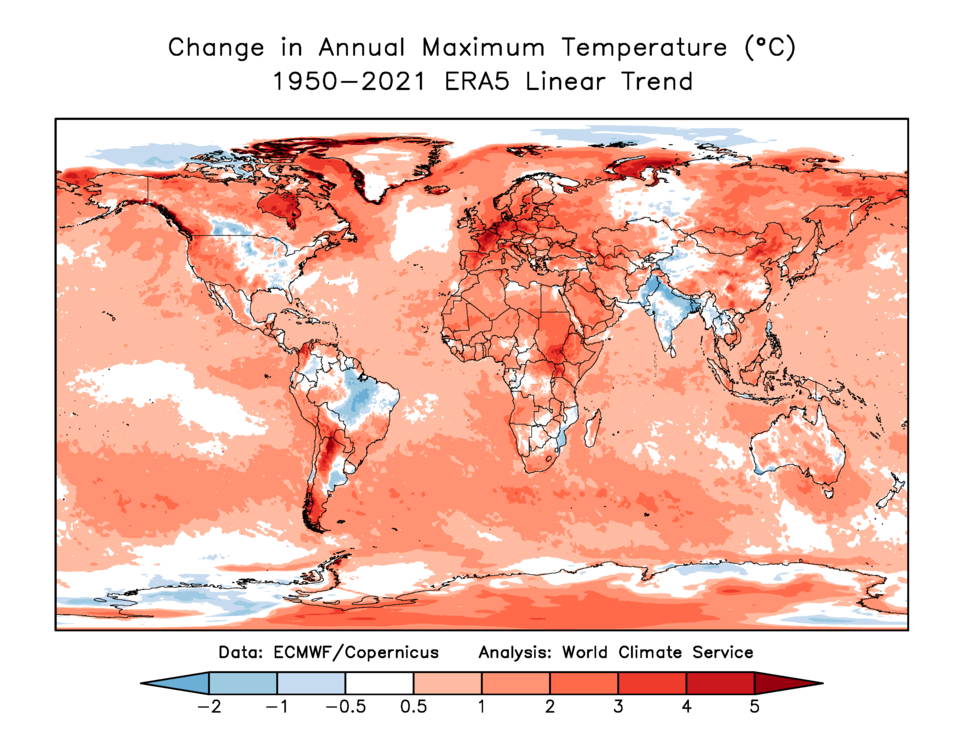
US Change in Maximum Temperatures
Now let’s compare the annual maximum trend to the background trend in daily high temperatures for summer (we’ll use June-August in the Northern Hemisphere). The figure below shows the result for the contiguous USA and southern Canada. As noted above, the annual maxima have decreased from the southern Canadian Plains to the southeastern USA (top panel), and this is broadly consistent with a lack of warming, or even a cooling trend, in average daily high temperatures (lower panel).
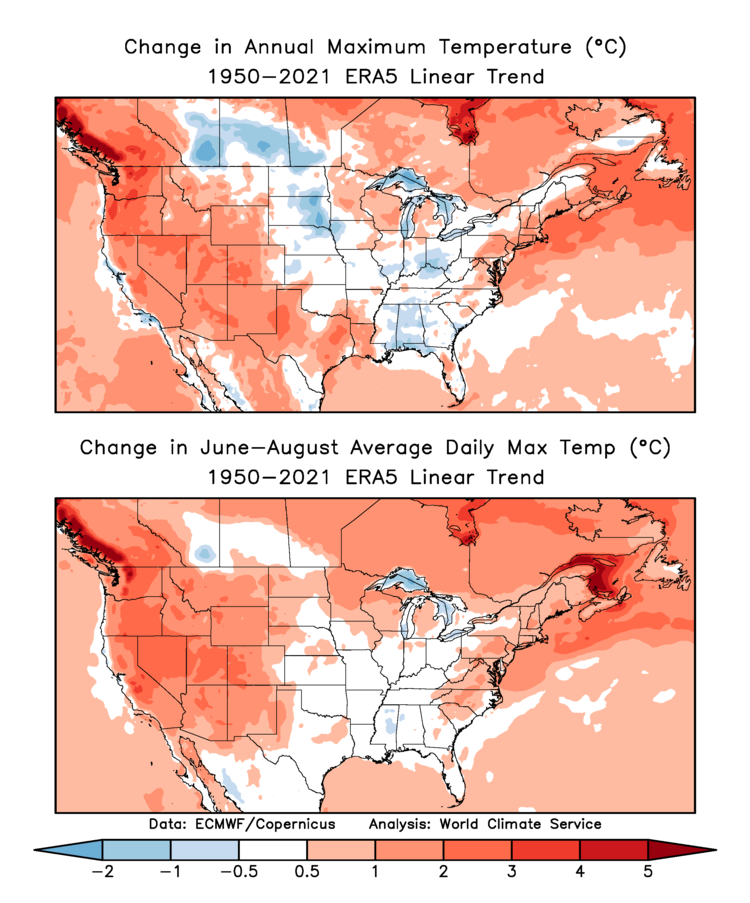
Europe Change in Maximum Temperatures
In contrast, the same analysis for Europe shows a striking and remarkable result: the change in annual maxima has been much larger than the already very significant background warming trend over western Europe – see below. This result is completely consistent with the astonishing new UK heat record: heat extremes have become (and evidently are still becoming) hotter much more quickly than the background climate.
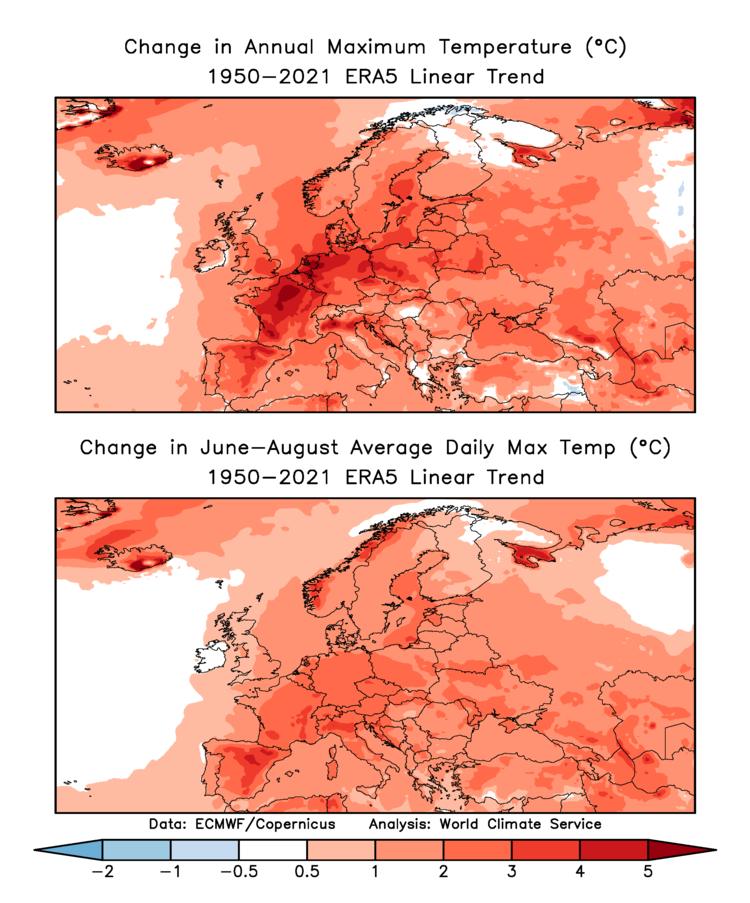
It’s worth looking at a climate observing site in the Netherlands to confirm the ERA5 result – see below for analysis of data from De Bilt. The change in annual maximum temperatures isn’t quite as high in the site data as in ERA5 (+4.2°C versus over +5°C), but essentially the results are similar: the rise in annual maximum temperatures at De Bilt has been very large, and much greater than the rise in typical summer temperatures.
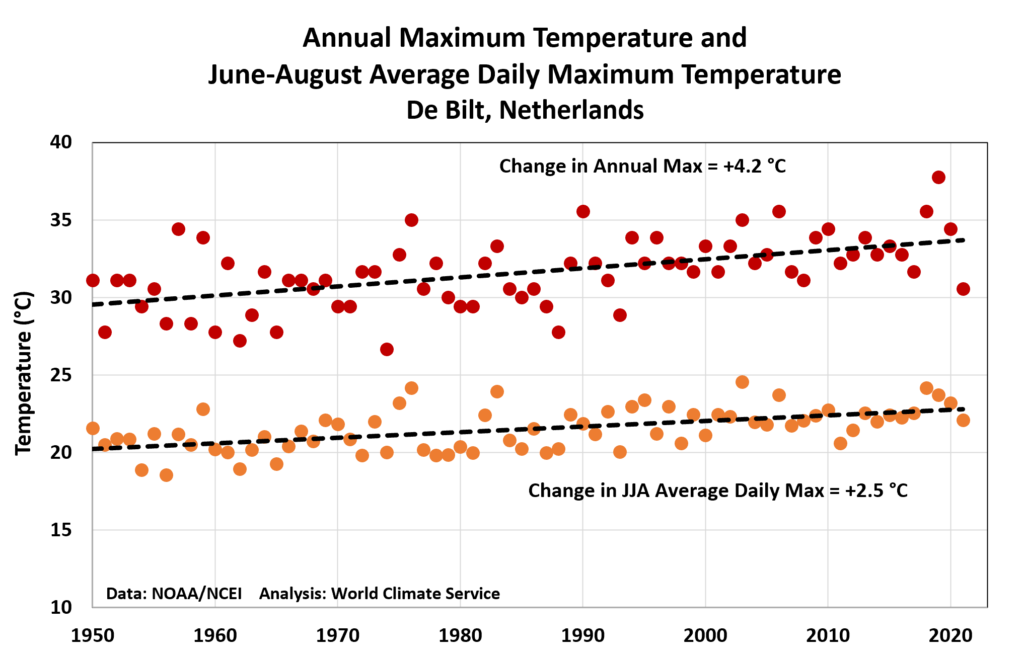
Maximum Temperature Changes in Other Regions
How about East Asia? ERA5 suggests a similar amplification of warming trends in northeastern China.
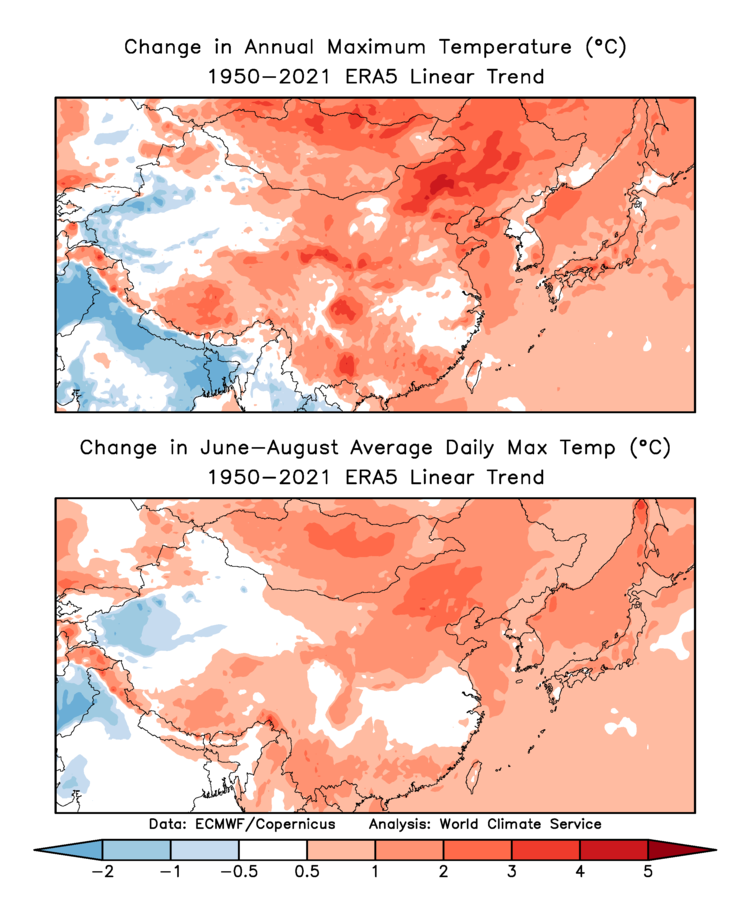
And again in South America: annual maximum temperatures have increased a lot more than overall summer (December-February) temperatures in far southern Brazil and parts of Argentina. As for Australia, there seems to be a similar excess of warming in the annual heat extremes for western and southern Australia (see below).
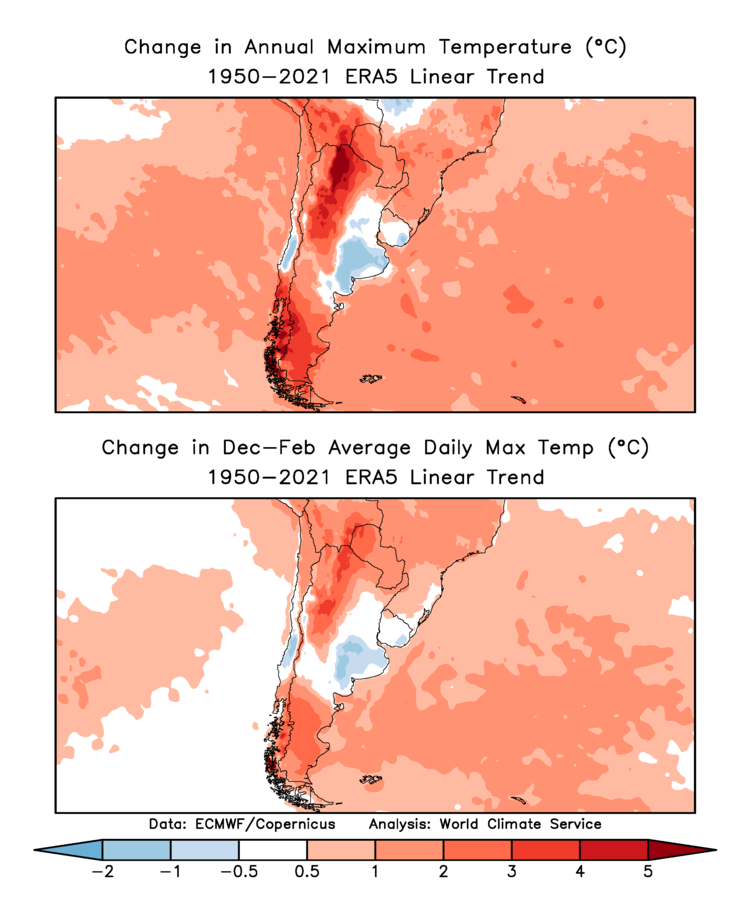
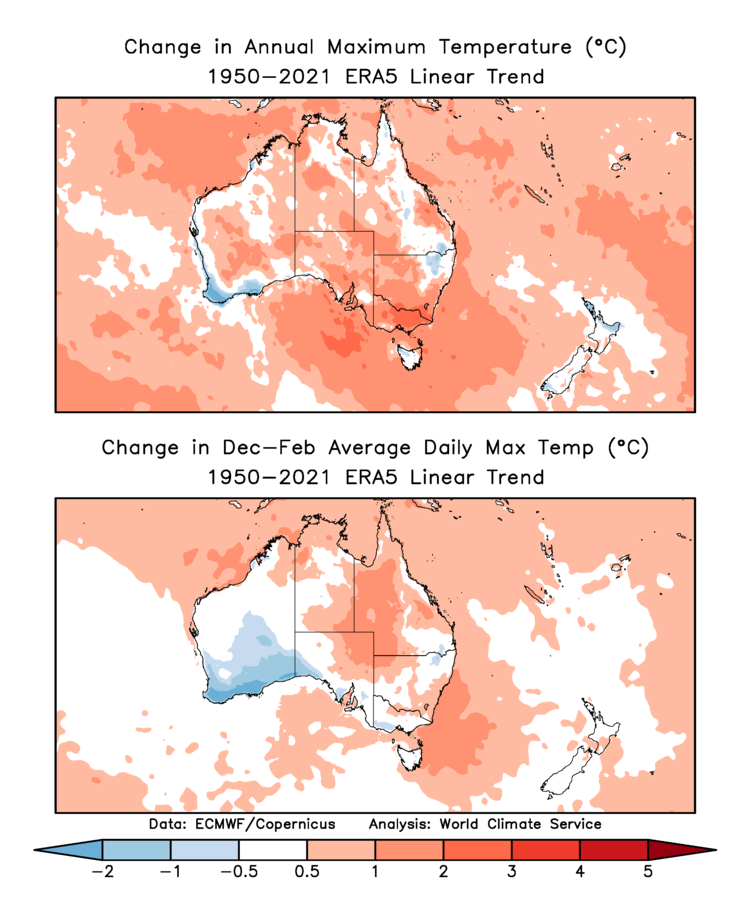
Conclusion
In conclusion, ERA5 data supports the hypothesis that heat extremes have warmed more rapidly than background “average” temperatures in certain parts of the globe. Western Europe stands out in the Northern Hemisphere with a quite astonishing increase in annual maximum temperatures – and this seems to be supported by station observations. However, ERA5 suggests that most of the world hasn’t seen a dramatic excess in warming of heat extremes, and for some regions there isn’t even an upward trend. So it’s a mixed picture overall, but there’s little doubt that a profound shift in heat extremes has already occurred in some parts of the world.
For a more general look at trends in both heat extremes and cold extremes, check out this previous post: https://www.worldclimateservice.com/2021/03/01/trends-in-temperature-extremes/